On August 10, 2021, Janardhan Sharma Prabhakar, newly appointed Finance Minister of the Government of Nepal led by Sher Bahadur Deuba, issued a white paper on the current economic situation of Nepal. Sharma remarked that the five-party coalition government has been entrusted with the guidelines to promote a socialist-oriented economy to drive future development and prosperity. It is stated that the Deuba Government has the responsibility and the duty to protect civil liberty and sovereignty vested in the people to progress ahead by learning lessons from the historical praxis.
The 55-point 21-page document, at the outset, criticizes the extra-constitutional steps taken by the Oli Government to dissolve the parliament, and also the use of ordinance to enforce Oli’s national federal budget. Taxation without representation has been breached and the sovereign parliament has been bypassed and violated. Thus, Oli Government’s budget as well as the national policy and programmes are said to be unconstitutional. Budget by ordinance makes parliamentary oversight irrelevant. This could set a wrong precedence in the budgetary system. This could bring in a culture promoting discretion, abuse of resources, misappropriation, non-transparent and interest laden misuse of financial resources and its abetment.
Sharma says a replacement to this budget be presented to the parliament keeping in mind the common minimum programme, current government policy and priorities to keep people’s aspirations at the forefront and to meet the COVID-19 Pandemic challenge. Sharma accuses that the pandemic control measures were not given utmost care and management. The current government, therefore, steps in to revive the economy, foster tangible positive change, and ensure prosperity.
Corruption in procurements related to COVID-19, including health & sanitary equipment and vaccines, created disarray and dissatisfaction in the country, thus, leading to the worsening of the health crisis. Around 45 lakh people received the first dose of vaccination, and 26 lakhs completed double dose jabs. It is said the current government has to complete these tasks on time to protect the health of citizens and give momentum to economic dynamism. The Finance Minister says that the amount earmarked to speedily immunize people has been disbursed to the health and population ministry.
In the aftermath of the national earthquake and the pandemic, the economic growth and development activities have slowed down. In 2019, the economic growth forecast of 8.5% has witnessed a negative 2.1% economic growth. In 2020, a 7% economic growth forecast has been foreshadowed by the second wave of COVID-19. Sectors like agriculture, industry, and service enterprises are dismal and no substantial improvements have been seen in this area of the economy. In GDP, the industrial and manufacturing sectors have weakened. Thus, sustainable economic growth has been hampered and the expansion of the industrial sector has not seen much tangible changes.
Internal and foreign investment is inadequate. The poor capacity of the government’s capital expenditure, weaker correlation of economic growth and employment and income-generating sector, unequal distribution of economic prosperity, and no reduction in the share of informal economy are some of the long piling problems of Nepal’s economy. So, to achieve economic advancement Sharma says the remedy of these pending problems lies in resolving the possible economic crises and inter-allied obstacles.
The consumer price index has been 5% within the stipulated limits for the last three years. Since 2016, the inflation was 4.4%, and in the 11 months of 2019-2020, it has been 3.6%. With the economic activities increasing and the international petroleum prices rise, Nepal’s inflation is at risk. Consumption has increased but capital formation has not. Savings has decreased from 13% to 6.6% estimation in terms of GDP while around 90% of GDP is in the consumption sector. The national savings scenario is similar – a downfall from 41.7% in the Fiscal Year of 2016 to 31.4% in 2020 has affected a desirable increase in capital formation. So, the government has to focus on this poor indicator.
Recurrent expenditure is high compared to capital expenditure, this white paper notes. Budgetary discipline and its economic implementation have been undone, and in the nearing end of Fiscal Year, haphazard use of monetary resources is the crux of problem sidelining and overlooking stipulated budget priority and work plan of action. Such expenditures are 21-22%. Populist programs in the budget have demerits while disbursed amounts have been targeted towards un-achieving outcomes. No assurances of resources beyond budget have been earmarked. These issues are problematic in cases of road infrastructure of 300 billion Nepalese Rupees (NRs) and railway development of 57 billion NRs.
As per the White Paper of 2016, the treasury deficit amounted to 48 Billion NRs in 2016, as compared to the 216 Billion NRs deficit in 2018-19. The savings amount in 2020-21 of 73 Billion NRs can reduce the deficit of treasury to 143 Billion NRs. This has caused an imbalance in the budgetary plans, fiscal accountability and resources mobilization. Revenue mobilization depends on import and consumption sectors, and internal revenue is not satisfactory, thus, endangering its durability. To promote the manufacturing sector, there is an urgent need to transform the revenue system for a leakage-proof, simple, consolidated, and sustainable mobilization in the domestic economy. The balance of payment is in deficit and the export level is not satisfactory. In 2000, the import-export ratio was at 48%, while in 2020-21 it is at 9.2% level. Nepal’s competitiveness and market access of the import sector are weak. Import in GDP in 2015-16 was 2.4%, while in 2020-21, it is 3.3%. Raw materials have seen an increase in the import sector.
Balance of payments deficit and foreign exchange reserves can manage 10 months of import business and economy. A remittance-driven economy has increased consumption patterns and it should be mobilized in internal market expansion, including the employment sector. To mobilize resources to achieve an effective outcome and capacity increase of international development assistance, stakeholders have to step up to make it purposefully effective, the Finance Minister suggests. Public debt, too, is increasing, and it might undermine due payment and its interest rate that would occupy a large pie in revenue. In the fiscal domain, agriculture, energy and other priority sectors incur expenditure, and investment in these sectors need visible improvements. Fiscal contribution in the manufacturing sector and infrastructure development avenues should be undertaken. Education and the vocational sector should be given fiscal stimulus and expanded. The capacity build-up, regulatory measures, and reforms can ensure effectiveness and result-oriented necessity. Insurance covers 27% of the population with a premium of 153 Billion NRs mobilization. Micro-finance occupies 6% of total insurance. SMEs should be given need-based micro-insurance facilities and services.
Capital markets have widened with investors and capital availability. The capital market is dominated by the fiscal sector and the manufacturing sector needs to be prioritized in its policy and institutional reforms. Good governance, transparency, effective utilization of technology, accountable development in the capital market needs underlining to boost the morale of investors. 24 PSUs are ordinarily profit-making and 18 are in loss in operations. So, management reforms and capacity build-up is necessary. In the past, suggestions and recommendations have not been taken well.
Privatized PSUs are also underperforming. They need a self-reliant approach, as in the case of Nepal Airlines Corporation. Foreign investment needs emphasis to upstart the economy. Poverty and economic inequality need to be prioritized due to the pandemic and bleak employment sector. Economic prosperity and income inequality need redistributive support to alleviate poverty levels. 32 lakhs citizens received a social security scheme that amounts to 76 Billion NRs in 2020-21, this paper notes. Social security programmes are disparate and inflicted with duplicity. Transparent and smart approaches are urgently required.
In Nepal, there are 22 national pride projects, and 18 transforming programs wherein problems are constant, Sharma notes. Expected problems not being well discerned, have put the Melamchi Water Project and other grand projects in unfavourable conditions. After the inauguration of the Upper Tamakoshi Multipurpose Hydel Plan, it was postponed due to multiple problems. There are many projects that have not achieved progress. The recommendations of the government’s National Resource and Financial Commission’s have not handled the demands of provincial and local governments astutely. Revenue division of 11.6% on the total revenue generation in Nepal and 24% of financial grant in the federal budget has been allocated. The federal government manages local programs. These programs being funded by financial grants has squeezed the financial autonomy. When three tiers of government manage projects, it results in duplicity and abuse of resources. Some local levels have not complied with constitutional and legal provisions of timely submission of budget, and are unable to ensure financial discipline when expenditure is incurred without approval of the budget.
Federal Service Commission Act is under examination of the Federal Parliament. It has resulted in chaos in the three-tier administrative management, including personnel and staff. Development cannot be met without lean, smart, motivated, and service-oriented civil servants. So, the government has to focus on service delivery and citizen’s welfare. Today, corruption is the core challenge in maintaining good governance. Corruption during pandemic procurement of health-related equipment is not a good omen. It is to take serious steps to undo corruption and promote good governance. COVID-19 pandemic gave impetus to conduct relief and subsidiary measures in fiscal and monetary policies in Nepal, too. Public sector units are granted to subsidize the consumer essential goods and services. Government privileges and services have been expanded, too, to below poverty groups, small entrepreneurs, peasant and marginalized communities and those sections which are excluded from such amenities. Effective programs are needed to meet these challenges to make relief and rehabilitation successful. Policy reforms are essential to meet economic challenges posed by the pandemic.
The first priority of the government is to ensure human security and public health. Economic indicators are to be improved, people’s trust and credibility to be restored, abuse of state’s resources to be curbed, economic and financial discipline to be brought in, public expenditure to focus on capital formation and service delivery reforms, and public debt to be decreased – these are some special attempts to be made under Deuba’s Financial Policy. A focus needs to be given on comparative advantage in the economy, electricity trade, production and internal consumption to promote manufacturing base and to reduce the deficit of import and export ration. Sharma says that the government will make agro-industries competitive and modernized, along with optimal utilization of national resources to promote SMEs; domestic capital and foreign investment be promoted to large industrial sectors. Self-employment and employment opportunities are promoted to include all and exclude none. Sharma remarks to focus the government’s attention to create a socialist-oriented economy for further development and prosperity enhancement. The government expects support and assistance from each and everyone, says the Finance Minister of Nepal.
Lastly, the White Paper is about the status of the Nepalese economy. It reveals the dregs in the fiscal areas of Nepal and proposes remedies to promote a robust economic system. The Treasury Department has to create an economy that is durable and sustainable as long as democracy functions under a modicum of policy stability and political understanding. Too much politicking makes it unstable and uncertain to meet the expectations of everyday public economics and household affairs. The burden of bearing citizenship is too high on annual obligations to pay when tax and revenue are raised to feed the bureaucratic apparatus and obesity of the state mechanism. Tax reforms and a revamp of revenue systems is needed to cure many of the ills in the exchequer domain so that the government efficiently spends money to raise the standard of human conditions, social welfare and social security.
Capitalism will thrive in Nepal if the Finance Ministry accomplishes annual programs and policies timely along with the government, in general, delivering promises promptly. In the days to come, politics has to forge a consensus on liberal democracy to endure a minimum level of economic prosperity to achieve, and a durable economic future secured for our posterity. A responsible, hardworking and genuine civic society should be promoted and furthered. Otherwise, the state of affairs would be liquid and fluid, and we will be mere consumers instead of being producers. We will be the dumping ground for international goods and services. Economic nationalism cannot survive in this type of situation. Nepal has to break this cycle of finance and monetary bogus to achieve real statehood and sovereignty so that every generation can take pride in peaks and pinnacles of excellence in enterprising esprit de corps.
Disclaimer: The views expressed in this article are of the author solely. TheRise.co.in neither endorses nor is responsible for them.
About the author
Mr. Kunwar is a politics and international relations analyst based in Kathmandu.

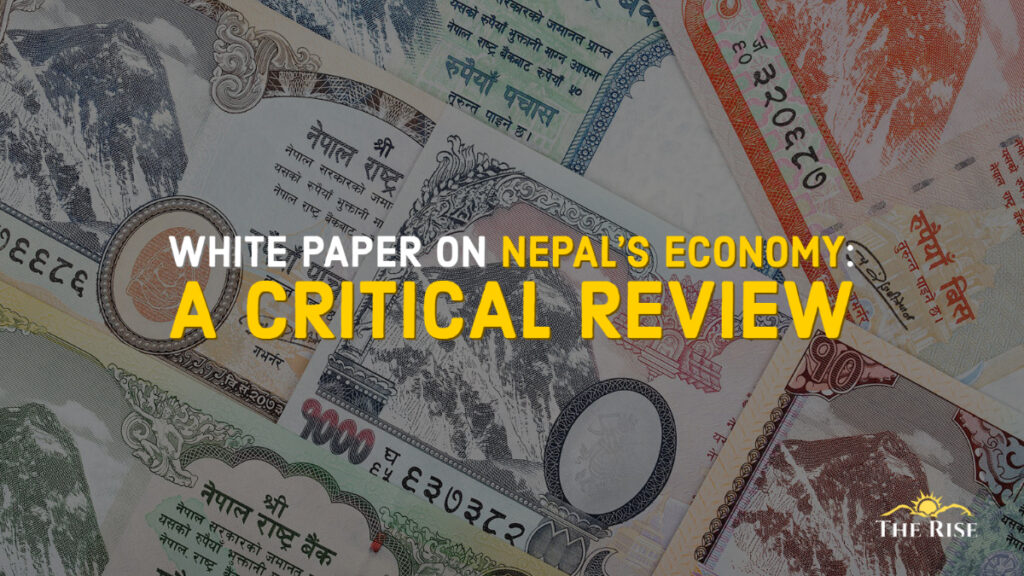



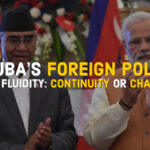
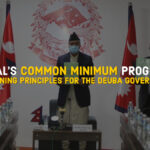
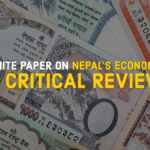
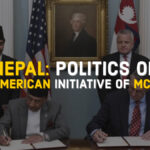


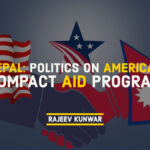









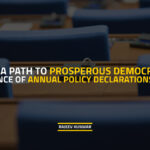
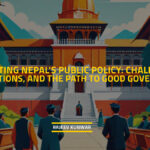


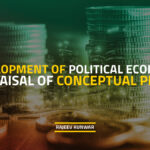




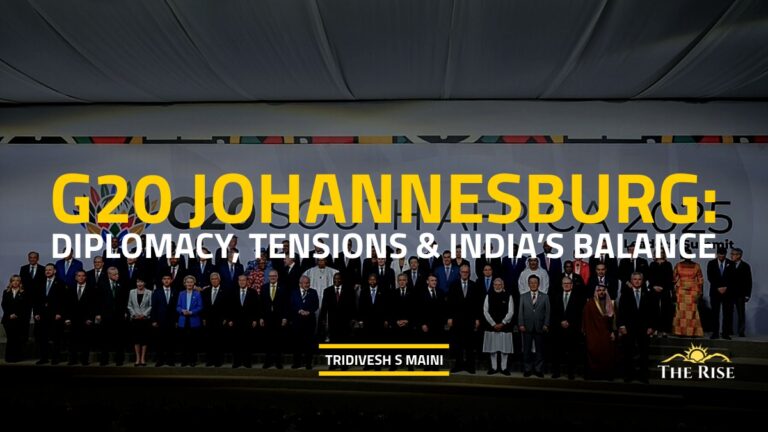

Pingback: Nepal: Politics of American Initiative of MCC - TheRise.co.in
Pingback: Nepal at UN: A Perspective - TheRise.co.in